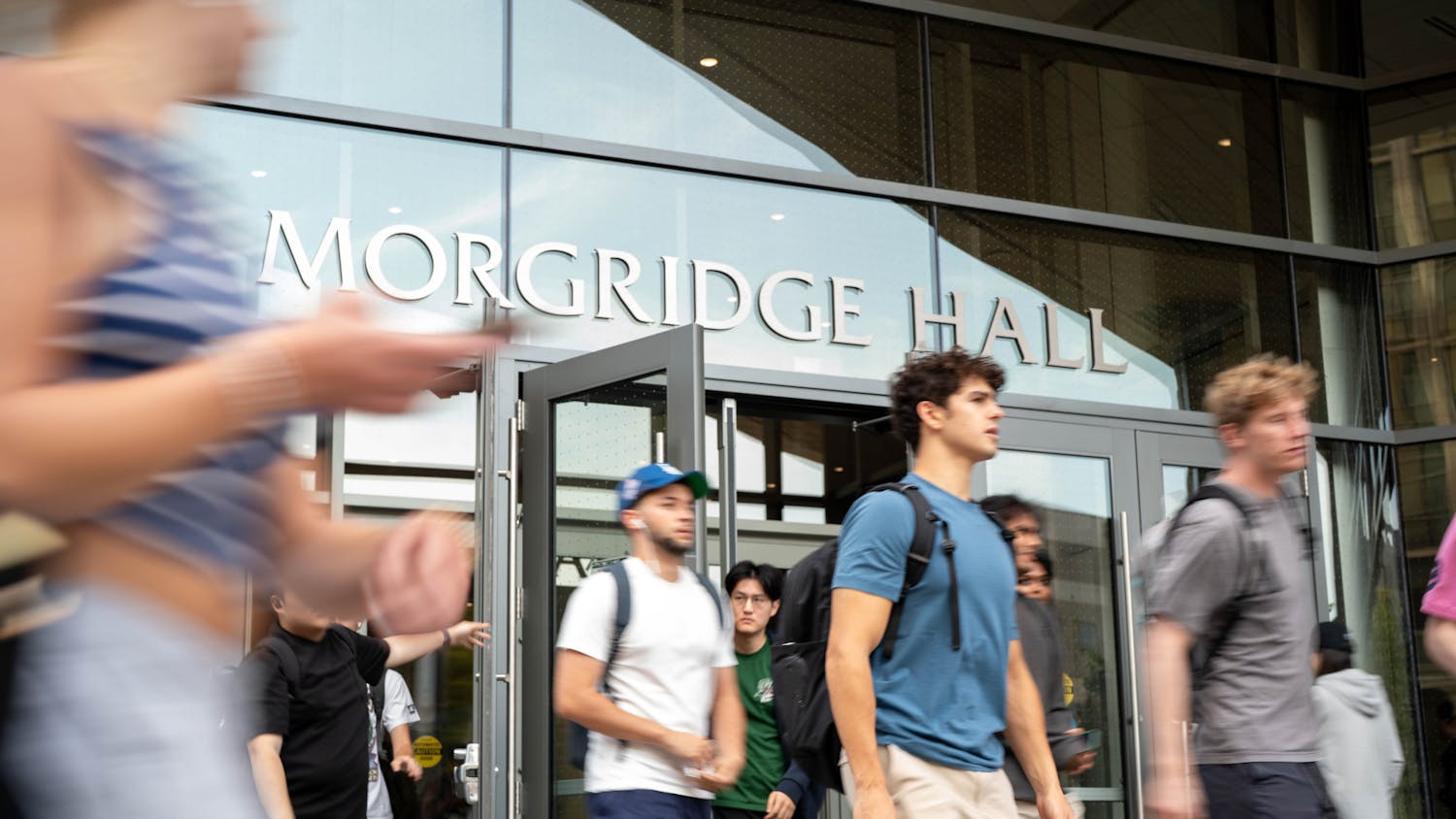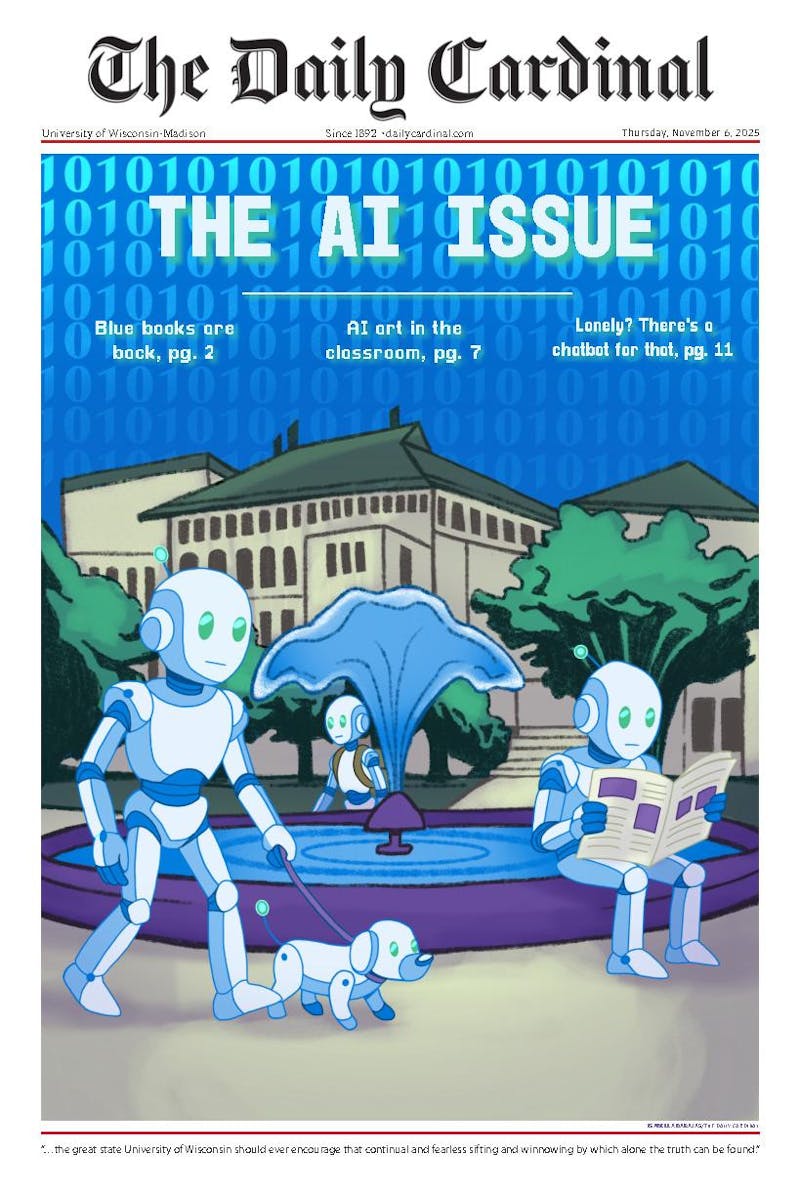By creating and renovating campus buildings in an environmentally sustainable manner, the University of Wisconsin-Madison inspires and preserves its commitment to progress, awareness and innovation.
“A renewed sense of space renews thinking and encourages and inspires us to do better,” said Angela Pakes Ahlman, external relations director in the Office of Sustainability.
Ahlman helped implement the 2005 UW-Madison Master Plan, which outlines goals for buildings, open spaces, transportation and utility systems on campus. The university releases an updated Master Plan every 10 years, and 2005 was the first time the authors identified sustainability as the No. 1 goal.
According to the Master Plan, sustainability implies using "green" building designs, materials and techniques when creating and renovating campus buildings. It also refers to reducing energy and water consumption, especially because heating and cooling campus buildings comprises 83 percent of overall energy use.
In accordance with the 2005 Master Plan, the newly constructed Union South trimmed down energy consumption by 37 percent using vertical sun louvers, occupancy sensors and a technique known as “daylighting” to harness natural heat.
Union South has a strong Wisconsin backstory, which enriches the unique building design and adds to its sustainability. One striking element is that 26 percent of the building materials originated in Wisconsin, and most of the other materials came from within a 500-mile radius of Madison.
For example, the floor in Union South’s Varsity Hall is repurposed wood from a Wisconsin barn. Additionally, the ashlar sandstone around the fireplace was quarried from Mosinee, Wis.
“These are timeless materials that read a sense of organic and warmth to the building, and students and community members just love it,” Ahlman said. “They come here because they want to be there, not because they have to be there.”
Ahlman said it was equally as cost-effective to demolish the old union as it would have been to renovate it.
According to John Nelson, an adjunct professor in the College of Engineering, it is more important to look at the resources needed to operate a building over its life cycle than general construction when evaluating its economy. Although sustainable building features may cost more than less environmentally friendly alternatives, the change will make a difference in long-term energy and maintenance costs.
“It’s not years one to five that matter, it is years five to 50,” Nelson said.
Additionally, Nelson said he believes many of the sustainable building elements use symbolic components rather than substantive features to appeal to the public’s emotions.
“Right now, a sustainable building needs to have all sorts of eco-decorations … all sorts of things that people can see, but sustainability is usually hidden,” Nelson said.
While the university is making large leaps in the direction of positive sustainable building practices, there is still room for improvement. Nelson said he believes the technology in sustainable building practices will drastically improve once it is based on science instead of emotions.
Other projects in the Master Plan include the Wisconsin Institutes of Discovery and the Education Building, both of which include sustainable features.
Gary Brown, director of Campus Planning and Landscape Architecture, said many of the new buildings received Leadership in Energy and Environmental Design certifications, although it was not a goal of the Master Plan.
According to its website, LEED is a United States Green Building Council certification program, which tracks sustainable building practices. Building project teams choose from three different certifications and can earn points to eventually reach that goal. Based on the state of Wisconsin standards alone, Brown said a silver LEED certification is always achievable.
Although LEED certifications bolster the university’s reputation—Union South is one of the two college unions nationwide to receive a gold LEED certification—Brown said the primary goal of the Plan never centered on receiving any specific ratings.
Brown also said he hopes sustainable building practices will become second nature in the future, and believes the focus in the next Master Plan will shift from buildings to outdoor spaces.
“We are going to spend a lot of time looking at the landscape and site elements … And a little less time on buildings,” Brown said. “Because the most sustainable buildings you don’t have to build; it’s a building that you already have.”
Ahlman said the 2005 Master Plan successfully kick-started the effort to improve environmental sustainability on campus, and said she hopes the new "green" buildings will inspire future Badgers to continue innovating and making campus even better.
“These are not things that happen overnight, it takes a lot of effort and a lot of great student voice to move things along,” Ahlman said.






